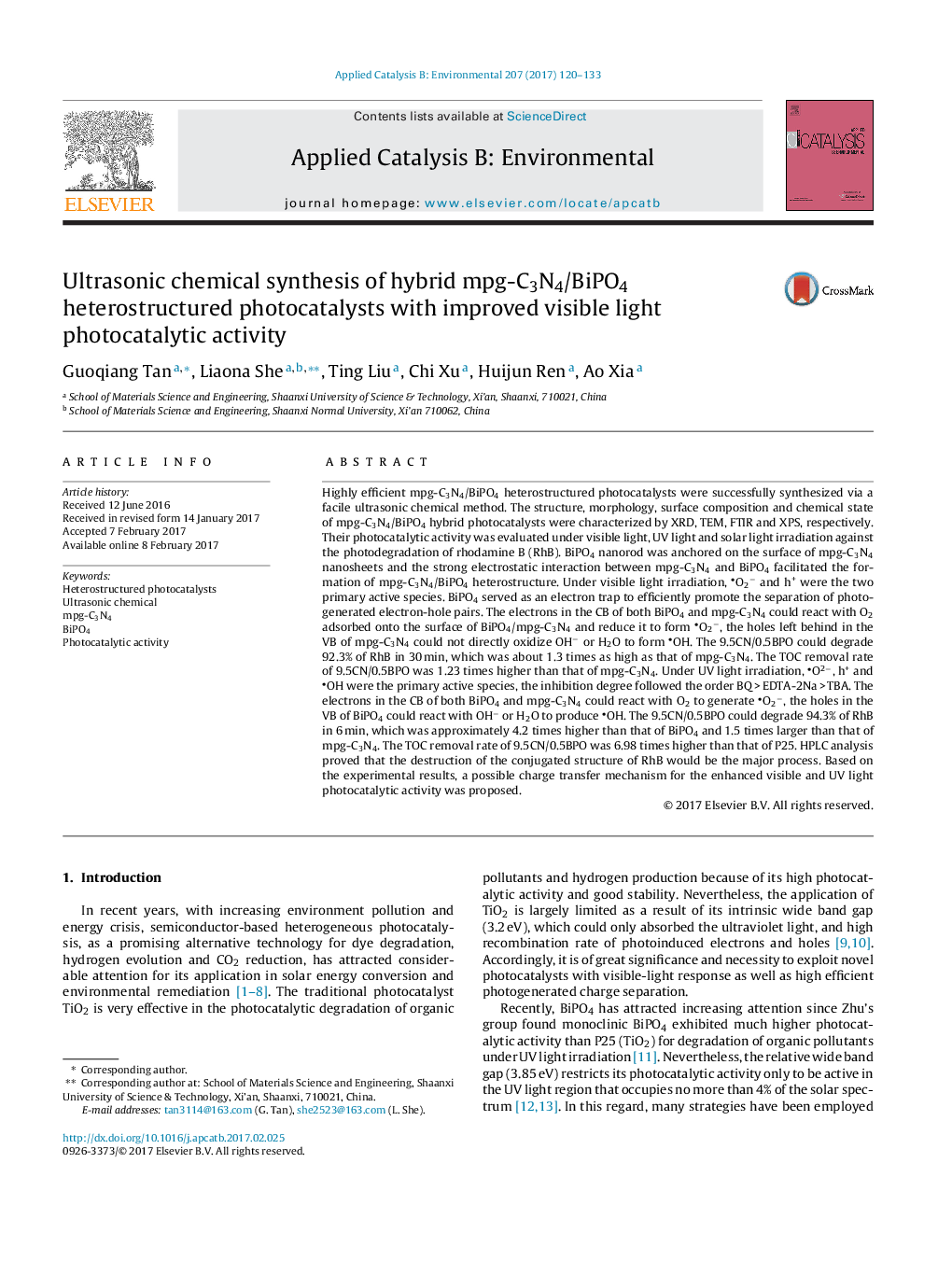| Article ID | Journal | Published Year | Pages | File Type |
|---|---|---|---|---|
| 6454054 | Applied Catalysis B: Environmental | 2017 | 14 Pages |
â¢Highly efficient mpg-C3N4/BiPO4 heterostructured photocatalysts were synthesized.â¢The strong interfacial interaction facilitated the formation of heterostructure.â¢The mpg-C3N4/BiPO4 heterostructure promoted photogenerated charge separation.â¢The mpg-C3N4/BiPO4 composites exhibited enhanced photocatalytic activities.â¢The primary active species under visible and UV light irradiation was different.
Highly efficient mpg-C3N4/BiPO4 heterostructured photocatalysts were successfully synthesized via a facile ultrasonic chemical method. The structure, morphology, surface composition and chemical state of mpg-C3N4/BiPO4 hybrid photocatalysts were characterized by XRD, TEM, FTIR and XPS, respectively. Their photocatalytic activity was evaluated under visible light, UV light and solar light irradiation against the photodegradation of rhodamine B (RhB). BiPO4 nanorod was anchored on the surface of mpg-C3N4 nanosheets and the strong electrostatic interaction between mpg-C3N4 and BiPO4 facilitated the formation of mpg-C3N4/BiPO4 heterostructure. Under visible light irradiation, O2â and h+ were the two primary active species. BiPO4 served as an electron trap to efficiently promote the separation of photogenerated electron-hole pairs. The electrons in the CB of both BiPO4 and mpg-C3N4 could react with O2 adsorbed onto the surface of BiPO4/mpg-C3N4 and reduce it to form O2â, the holes left behind in the VB of mpg-C3N4 could not directly oxidize OHâ or H2O to form OH. The 9.5CN/0.5BPO could degrade 92.3% of RhB in 30 min, which was about 1.3 times as high as that of mpg-C3N4. The TOC removal rate of 9.5CN/0.5BPO was 1.23 times higher than that of mpg-C3N4. Under UV light irradiation, O2â, h+ and OH were the primary active species, the inhibition degree followed the order BQ > EDTA-2Na > TBA. The electrons in the CB of both BiPO4 and mpg-C3N4 could react with O2 to generate O2â, the holes in the VB of BiPO4 could react with OHâ or H2O to produce OH. The 9.5CN/0.5BPO could degrade 94.3% of RhB in 6 min, which was approximately 4.2 times higher than that of BiPO4 and 1.5 times larger than that of mpg-C3N4. The TOC removal rate of 9.5CN/0.5BPO was 6.98 times higher than that of P25. HPLC analysis proved that the destruction of the conjugated structure of RhB would be the major process. Based on the experimental results, a possible charge transfer mechanism for the enhanced visible and UV light photocatalytic activity was proposed.
Graphical abstractDownload high-res image (112KB)Download full-size image
